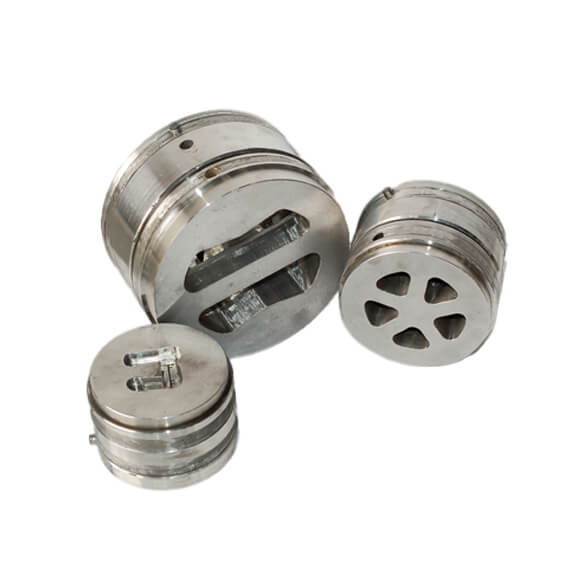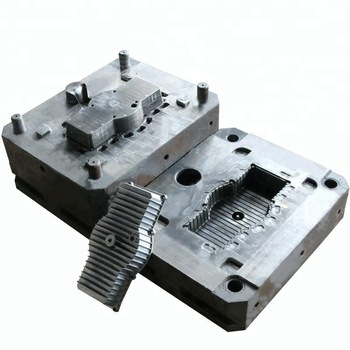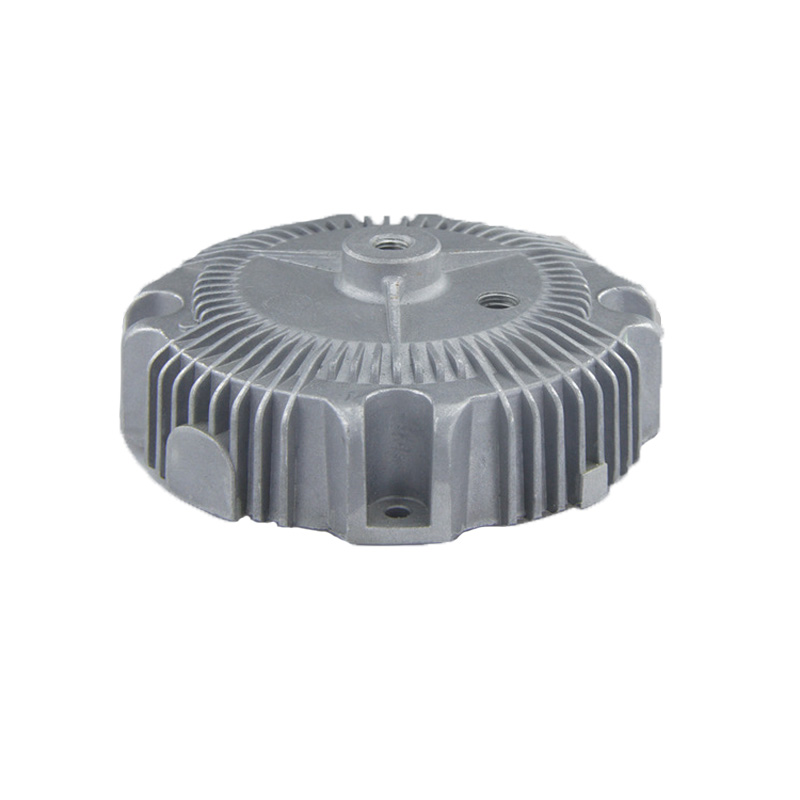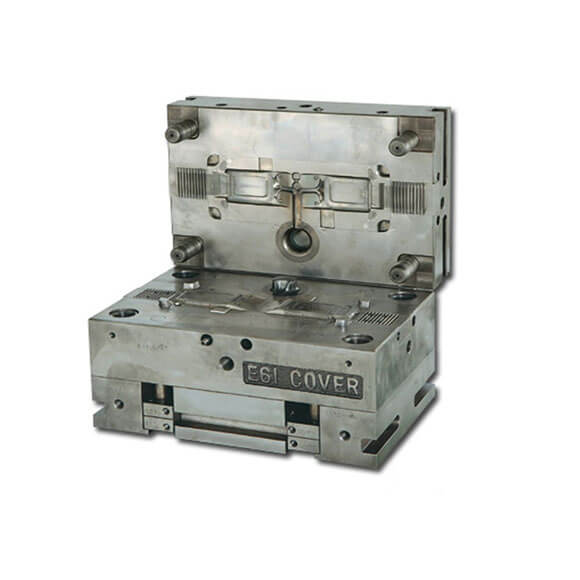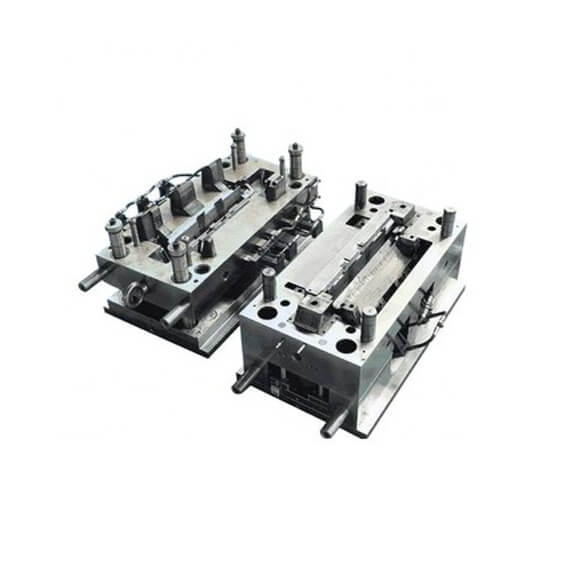กำลังมองหาซัพพลายเออร์แม่พิมพ์หล่อใช่ไหม? ด้วยเครื่องจักร CNC หลายร้อยเครื่องความจุภายในที่ไม่มีใครเทียบของเราช่วยให้มั่นใจได้ว่าชิ้นส่วนของคุณจะได้รับการจัดส่งตรงเวลาทุกครั้ง ที่ Katio อุปกรณ์เครื่องจักรกลซีเอ็นซีที่ได้รับการรับรอง ISO 9001 ของเราได้รับการออกแบบมาสำหรับทั้งการสร้างต้นแบบอย่างรวดเร็วและการผลิตชิ้นส่วนที่ใช้งานได้ในปริมาณน้อย
แม่พิมพ์หล่อเป็นเครื่องมือในการหล่อชิ้นส่วนโลหะซึ่งเป็นเครื่องมือที่เสร็จสิ้นกระบวนการหล่อขึ้นรูปบนเครื่องตีขึ้นรูปแบบพิเศษ ขั้นตอนพื้นฐานของการหล่อแม่พิมพ์คือของเหลวโลหะจะถูกเติมเข้าไปในโพรงของแม่พิมพ์ก่อนด้วยความเร็วต่ำหรือสูง ข้อบกพร่องที่หลวมยังทำให้โครงสร้างภายในของช่องว่างสามารถเข้าถึงเมล็ดพืชที่แตกหักได้ คุณสมบัติเชิงกลที่ครอบคลุมของช่องว่างได้รับการปรับปรุงอย่างมีนัยสำคัญ
New technologies for surface treatment of die-casting molds are divided into three categories:
(1) Improved technology of traditional heat treatment process;
(2) Surface modification technologies, including surface thermal diffusion treatment, surface phase transformation strengthening, electric spark strengthening technology, etc .;
(3) Coating technology, chemical plating, etc.
Die-casting molds are a large category in molds. With the rapid development of the global automotive and motorcycle industry, the die-casting industry has ushered in a new period of development. At the same time, higher requirements have been placed on the comprehensive mechanical properties and life of die-casting molds. Luo Baihui, Secretary General of the International Mold Association, believes that to meet the increasing demand for performance, it is still difficult to meet the application of new mold materials only. Various surface treatment technologies must be applied to the surface treatment of die casting molds to achieve high efficiency of die casting molds , High precision and long life requirements. In various molds, the working conditions of die-casting molds are relatively harsh. Pressure casting is to make the molten metal fill the mold cavity under high pressure and high speed and die-cast. It repeatedly contacts with the hot metal during the work. Therefore, the die-casting mold is required to have high thermal fatigue resistance, thermal conductivity, wear resistance, and corrosion resistance. , Impact toughness, red hardness, good release properties, etc. Therefore, the surface treatment technology of the die-casting mold is required to be high.
1.Improved technology of traditional heat treatment process
กระบวนการอบชุบด้วยความร้อนแบบดั้งเดิมสำหรับแม่พิมพ์หล่อคือการชุบ - แบ่งเบาบรรเทา ต่อมาได้มีการพัฒนาเทคโนโลยีการปรับสภาพพื้นผิว เนื่องจากความหลากหลายของวัสดุที่สามารถใช้เป็นแม่พิมพ์หล่อขึ้นรูปได้เทคโนโลยีและกระบวนการในการปรับสภาพพื้นผิวเดียวกันสามารถสร้างผลกระทบที่แตกต่างกันไปในวัสดุที่แตกต่างกัน Schoff เสนอเทคโนโลยีการปรับสภาพพื้นผิวสำหรับวัสดุพิมพ์แม่พิมพ์และเทคโนโลยีการปรับสภาพพื้นผิว จากกระบวนการดั้งเดิมเสนอเทคโนโลยีการประมวลผลที่เหมาะสมสำหรับวัสดุแม่พิมพ์ที่แตกต่างกันเพื่อปรับปรุงประสิทธิภาพของแม่พิมพ์และอายุการใช้งานของแม่พิมพ์ ทิศทางการพัฒนาอีกประการหนึ่งของการปรับปรุงเทคโนโลยีการอบชุบด้วยความร้อนคือการผสมผสานกระบวนการบำบัดความร้อนแบบดั้งเดิมเข้ากับกระบวนการรักษาพื้นผิวขั้นสูงเพื่อปรับปรุงอายุการใช้งานของแม่พิมพ์หล่อตาย ตัวอย่างเช่น,
2. Surface modification technology
Surface thermal diffusion technology
This type includes carburizing, nitriding, boronizing and carbonitriding, sulfur carbonitriding, and so on.
Carburizing and carbonitriding
The carburizing process is used in cold, hot work and plastic mold surface strengthening to improve mold life. For example, 3Cr2W8V steel die-casting mold is first carburized, then quenched at 1140 ~ 1150 ℃, tempered twice at 550 ℃, the surface hardness can reach HRC56 ~ 61, which can increase the die life of die-casting non-ferrous metals and its alloys by 1.8 ~ 3.0 . When carburizing, the main process methods include solid powder carburizing, gas carburizing, and vacuum carburizing, ion carburizing, and carbonitriding formed by adding nitrogen in a carburizing atmosphere. Among them, vacuum carburizing and ion carburizing are technologies developed in the past 20 years. This technology has the characteristics of fast carburizing speed, uniform carburizing layer, smooth carbon concentration gradient, and small deformation of the workpiece. It will be on the mold surface, especially precision molds. Play an increasingly important role in surface treatment.
Nitriding and related low temperature thermal diffusion technology
This type includes nitriding, ion nitriding, carbonitriding, oxygen-nitriding, sulfur-nitriding, and sulfur-carbon-nitriding, oxygen-nitrogen-sulfur ternary infiltration and other methods. These methods have simple and convenient treatment process, strong adaptability, low infiltration temperature, generally 480 ~ 600 ℃, small deformation of the workpiece, especially suitable for surface strengthening of precision molds, and high hardness and good wear resistance of nitrided layer. Anti-stick performance.
แม่พิมพ์หล่อเหล็ก 3Cr2W8V หลังจากการชุบและการแบ่งเบาบรรเทาไนไตรดิง 520 ~ 540 ℃อายุการใช้งานนานกว่าแม่พิมพ์ที่ไม่ใช่ไนไตรด์ 2 ถึง 3 เท่า ในสหรัฐอเมริกาแม่พิมพ์หล่อตายจำนวนมากที่ทำจากเหล็ก H13 ต้องเป็นไนไตรด์และใช้ไนไตรด์แทนการแบ่งเบาบรรเทา ความแข็งผิวสูงถึง HRC65 ~ 70 และความแข็งของแกนกลางของแม่พิมพ์ต่ำและมีความเหนียวดี คุณสมบัติทางกล กระบวนการไนไตรดิงเป็นกระบวนการที่ใช้กันทั่วไปในการชุบผิวแม่พิมพ์หล่อตาย อย่างไรก็ตามเมื่อชั้นสว่างสีขาวที่บางและเปราะปรากฏบนชั้นไนไตรด์จะไม่สามารถต้านทานผลกระทบของความเครียดจากความร้อนแบบสลับได้และง่ายต่อการสร้างไมโครแคร็กและลดความต้านทานความล้าจากความร้อน ดังนั้นในกระบวนการไนไตรดิงจึงต้องควบคุมกระบวนการอย่างเคร่งครัดเพื่อหลีกเลี่ยงการสร้างชั้นเปราะ ต่างประเทศได้เสนอให้ใช้กระบวนการไนไตรด์ทุติยภูมิและหลายกระบวนการ วิธีการไนไตรด์ซ้ำ ๆ สามารถย่อยสลายชั้นไนไตรด์สีขาวสว่างซึ่งง่ายต่อการสร้างรอยแตกขนาดเล็กในระหว่างการให้บริการเพิ่มความหนาของชั้นไนไตรด์และในขณะเดียวกันก็ทำให้พื้นผิวแม่พิมพ์มีชั้นความเค้นตกค้างที่หนาซึ่งจะมีนัยสำคัญ ปรับปรุงอายุการใช้งานของแม่พิมพ์ นอกจากนี้ยังมีวิธีการเช่นคาร์บอไนไตรด์ในอ่างเกลือและคาร์บอไนไตรด์ในอ่างเกลือ กระบวนการเหล่านี้ใช้กันอย่างแพร่หลายในต่างประเทศและหาได้ยากในประเทศจีน ตัวอย่างเช่นกระบวนการ TFI + ABI ถูกแช่อยู่ในอ่างเกลือที่เป็นด่างออกซิไดซ์หลังจากไนโตรคาร์บูไรซิ่งในอ่างเกลือ พื้นผิวของชิ้นงานถูกออกซิไดซ์และปรากฏเป็นสีดำและปรับปรุงความต้านทานการสึกหรอความต้านทานการกัดกร่อนและความต้านทานความร้อน อายุการใช้งานของแม่พิมพ์หล่อโลหะผสมอลูมิเนียมที่ผ่านกรรมวิธีนี้จะเพิ่มขึ้นหลายร้อยชั่วโมง อีกตัวอย่างหนึ่งคือกระบวนการออกซินิทซึ่งถูกไนตริดหลังจากคาร์บอไนไตรด์ที่พัฒนาโดยฝรั่งเศสและมีลักษณะเฉพาะมากขึ้นเมื่อนำไปใช้กับแม่พิมพ์หล่อโลหะที่ไม่ใช่เหล็ก

